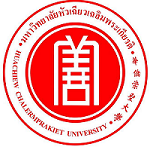กรุณาใช้ตัวระบุนี้เพื่ออ้างอิงหรือเชื่อมต่อรายการนี้:
https://has.hcu.ac.th/jspui/handle/123456789/3483ระเบียนเมทาดาทาแบบเต็ม
| ฟิลด์ DC | ค่า | ภาษา |
|---|---|---|
| dc.contributor.author | น้ำผึ้ง ปุญญนิรันดร์ | - |
| dc.contributor.author | รุ้งเพชร สงวนพงษ์ | - |
| dc.contributor.author | Numpung Punyanirun | - |
| dc.contributor.author | Rungpetch Saquanpong | - |
| dc.contributor.other | Huachiew Chalermprakiet University. Faculty of Physical Therapy | en |
| dc.contributor.other | Huachiew Chalermprakiet University. Faculty of Physical Therapy | en |
| dc.date.accessioned | 2025-01-08T12:30:50Z | - |
| dc.date.available | 2025-01-08T12:30:50Z | - |
| dc.date.issued | 2020 | - |
| dc.identifier.uri | https://has.hcu.ac.th/jspui/handle/123456789/3483 | - |
| dc.description.abstract | เพื่อเปรียบเทียบความสามารถในการใช้รยางค์แขนในการทำกิจกรรมและความแข็งแรงของรยางค์แขนในผู้สูงอายุกับผู้ใหญ่ตอนต้นและมีวัตถุประสงค์รอง3 ข้อ เพื่อดูความสัมพันธ์ระหว่างความสามารถในการใช้รยางค์แขนในการทำกิจกรรมและความแข็งแรงของรยางค์แขนเพื่อดูความสัมพันธ์ระหว่างความสามารถในการใช้รยางค์แขนในการทำกิจกรรมและคุณภาพชีวิตของผู้สูงอายุและเพื่อดูความสัมพันธ์ระหว่างความแข็งแรงของรยางค์แขนและคุณภาพชีวิตชองผู้สูงอายุวิธีการ: ผู้เข้าร่วมงานวิจัยทั้งหมด 72 คน ผู้ใหญ่ตอนต้นช่วงอายุ 25-35ปี 20 คน (ชาย 10 คน หญิง 10 คน) ผู้สูงอายุ ช่วงอายุ 60-69 ปี 20 คน(ชาย 10 คน หญิง 10 คน) ช่วงอายุ 70-79 ปี 20 คน (ชาย 10 คน หญิง 10 คน)และช่วงอายุ 82 ปีขึ้นไป 12 คน (ชาย 6 คน หญิง 6 คน)ผู้เข้าร่วมงานวิจัยที่ผ่านเกณฑ์การคัดเข้าและคัดออกเข้ารับการประเมินความสามาถในการทำกิจกรรมของรยางค์แขนโดยใช้แบบประเมินupper extremity performance test for the elderly (TEMPA)ความแข็งแรงของแขนด้วยการทดสอบ arm curlและคุณภาพชีวิตของผู้สูงอายุด้วยแบบประเมิน WHOQOL-BREF-THAI (WHOQOL)วิเคราะห์ข้อมูลด้วยสถิติ Kruskal-Wallist testในการเปรียบเทียบความแตกต่างของแต่ละกลุ่ม และใช้ post hoc bonferroniเพื่อหากลุ่มอายุที่มีความแตกต่างกันใช้สถิติ Spearman correlationใช้ในการหาความสัมพันธ์ระหว่างความสามารถในการใช้รยางค์แขนในการทำกิจกรรมและคุณภาพชีวิตของผูัสูงอายุและความสัมพันธ์ระหว่างความแข็งแรงของรยางค์แขนและคุณภาพชีวิตของผู้สูงอายุผลการวิจัย จากผลการวิจัยพบว่า กลุ่มผู้ใหญ่ตอนต้นมีความแตกต่างกันของความสามารถในการทำกิจกรรมของรยางค์แขนอย่างมีนัยสำคัญทางสถิติกับกลุ่มของผู้สูงอายุทั้ง3 กลุ่ม (ช่วงอายุ 60-69 70-79 ปี และ 80 ปีขึ้นไป)อย่างมีนัยสำคัญทางสถิติ ในงานที่ 1 ยกและย้ายเหยือกน้ำไปยังตำแหน่งอื่นงานที่ 2 เปิดขวดโหลและตักกาแฟให้เต็มช้อน งานที่ 4ไขกุญแจและนำขวดยาออกจากกล่อง งานที่ 5 เขียนจดหมายและติดแสตมป์ งานที่6 ผูกผ้าพันคอ และในงานที่ 3 ยกเหยือกน้ำและเทน้ำใส่แก้ว งานที่ 7สับไพ่และแจกไพ่ พร้อมกับเก็บคืน งานที่ 8 หยิบเหรียญและหยอดลงในกระปุกและงานที่ 9 หยิบของชิ้นเล็ก ๆ ใส่ถ้วยพบว่ากลุ่มผู้ใหญ่ตอนต้นมีความแตกต่างของความสามรถในการทำกิจกรรมของรยางค์แขนอย่างมีนัยสำคัญทางสถิติกับกลุ่มผู้สูงอายุ2 กลุ่ม (ช่วงอายุ 70-79 ปี และ 80 ปีขึ้นไป)แต่ไม่มีความแตกต่างอย่างมีนัยสำคัญทางสถิติในกลุ่มผู้สูงอายุ (ช่วงอายุ60-69 ปี) ความสัมพันธ์ระหว่างความสามารถในการใช้รยางค์แขนในการทำกิจกรรมและความแข็งแรงของรยางค์แขนมีค่าระหว่าง-0.55 ถึง -0.24ค่าความสัมพันธ์ระหว่างความสามารถในการใช้รยางค์แขนในการทำกิจกรรมและคุณภาพชีวิตของผู้สูงอายุมีค่าระหว่าง 0.04 ถึง 0.19ค่่าความสัมพันธ์ระหว่างความแข็งแรงของรยางค์แขนและคุณภาพชีวิตของผู้สูงอายุมีค่า 0.11สรุปผลการวิจัย :ความสามารถในการทำกิจกรรมของรยางค์แขนและความแข็งแรงของรยางค์แขนในผู้สูงอายุมีแตกต่างอย่างมีนัยสำคัญทางสถิติกับผู้ใหญ่ตอนต้นความสัมพันธ์ระหว่างความสามารถในการใช้รยางค์แขนในการทำกิจกรรมและความแข็งแรงของรยางค์เป็นความสัมพันธ์ในเชิงลบซึ่งอยู่ในระดับปานกลางความสามารถในการใช้รยางค์แขนในการทำกิจกรรมและคุณภาพชีวิตของผู้สูงอายุไม่มีความสัมพันธ์กันและความแข็งแรงของรยางค์แขนและคุณภาพชีวิตของผู้สูงอายุไม่มีความสัมพันธ์กัน | en |
| dc.description.abstract | Objective: The primary aim of this study was to compare upper limbfunction and strength between the elderly (age above 60 years) andyoung adults (age 25-35 years). This study had three secondaryobjectives. The first objective was to investigate the correlationbetween upper limb function and strength. The Second objective was toinvestigate the correlation between limb function and quality of lifeof the elderly. The last objective was to investigate the correlationbetween upper limb strength index (arm curl) and quality of life ofthe elderly.Method: Seventy-two participants were recruited into the study. All ofparticipants were divided into 4 groups including aged 25-35 years,aged 60-69 years, aged 70-79 years and above 80 years. Participantswho passed the inclusion and exclusion criteria were tested theability to perform activities of upper limb by using the upperextremity performance test for the elderly (TEMPA), upper limbstrength with arm curl test, and the WHOQOL-BREF-THAI (WHOQOL) testfor quality of life of the elderly. A Kruskal-Wallist test was used tocompare between the elderly and young adult with post hoc bonferronitest to find different age groups. A Spearman correlation was used tofind the correlation between upper limb function and strength,correlation between upper limb function and quality of life of theelderly, and correlation between upper limb strength index (arm curl)and quality of life the elderly.Result: The results showed that the ability to perform activities ofupper limb in young adult was significantly different from the 3groups if the elderly. The ability to perform activities of upper limbthat included picking up and moving a jar, openning a jar and taskinga spoonful of coffee, unlocking a lock and opening a pill container,writing on an envelope and sticking on a stamp, and tieing a scarfaround one's neck and in task picking up a pitcher of water and pourwater into a glass, shuffling and deal playing cars, handling coins,and picking up and moving small objects, showed that the ability toperform activities of upper limb in young adult was significantlydifferent from the 2 groups (aged 70-79 and above 80 years) of theelderly, but was no statistically significant different in the abilityof the limb activities in the elderly with ages 60-69 years. Thecorrelation between the ability to perform activities of upper limb(TEMPA) and strength varied between -0.55 to -0.24. The correlationbetween activities of upper limb (TEMPA) and quality of life of theelderly (WHOQOL) was 0.04 to 0.19. The correlation between the upperlimb strength (arm curl) and quality of life of the elderly (WHOQOL)was 0.11.Conclusion: The upper extremity function in the elderly werestatistically significant different from the young adults. Theactivities of upper limb (TEMPA) and strength has a negativerelationship. There was neither correlation between activities ofupper limb (TEMPA) and quality of life of the elderly (WHOQOL), norbetween strength and quality of life of the elderly. | en |
| dc.description.sponsorship | การวิจัยนี้ได้รับทุนอุดหนุนจากมหาวิทยาลัยหัวเฉียวเฉลิมพระเกียรติปีการศึกษา 2562 | en |
| dc.language.iso | th | en |
| dc.publisher | มหาวิทยาลัยหัวเฉียวเฉลิมพระเกียรติ | en |
| dc.subject | ผู้สูงอายุ -- สุขภาพและอนามัย | en |
| dc.subject | Older people -- Health and hygiene | en |
| dc.subject | แขน | en |
| dc.subject | Arm | en |
| dc.subject | การเคลื่อนไหวของมนุษย์ | en |
| dc.subject | Human mechanics | en |
| dc.subject | กำลังกล้ามเนื้อ | en |
| dc.subject | Muscle strength | en |
| dc.title | การเปรียบเทียบความสามารถในการใช้รยางค์แขนในการทำกิจกรรมและความแข็งแรงของรยางค์แขนในผู้สูงอายุกับผู้ใหญ่ตอนต้น | en |
| dc.title.alternative | Comparison of Upper Limb Function and Strength between Elderly and Young Adult | en |
| dc.type | Technical Report | en |
| ปรากฏในกลุ่มข้อมูล: | Physical Therapy - Research Reports | |
แฟ้มในรายการข้อมูลนี้:
| แฟ้ม | รายละเอียด | ขนาด | รูปแบบ | |
|---|---|---|---|---|
| Comparison-of-Upper-Limb-Function-and-Strength-between-Elderly.pdf | 4.37 MB | Adobe PDF | ดู/เปิด |
รายการทั้งหมดในระบบคิดีได้รับการคุ้มครองลิขสิทธิ์ มีการสงวนสิทธิ์เว้นแต่ที่ระบุไว้เป็นอื่น
